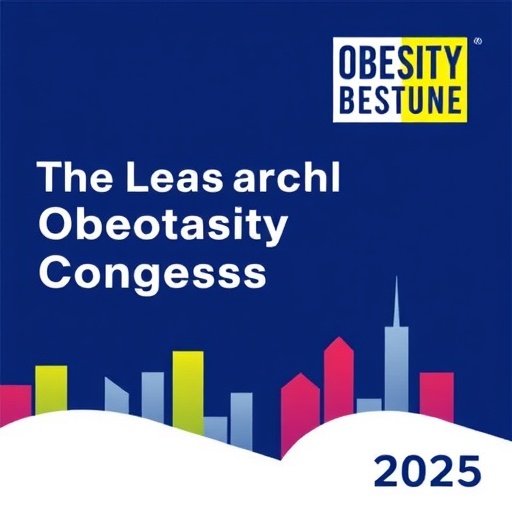In an era where obesity has become a global epidemic, unraveling the complex interplay between diet, genetics, and long-term health outcomes remains an urgent scientific challenge. A recent landmark study published at the 10th meeting of the Association for the Study of Obesity in the UK sheds illuminating light on how childhood consumption of ultra-processed foods (UPFs) interacts with genetic predisposition to influence the risk of obesity in early adulthood. This extensive prospective cohort investigation, leveraging data from over three thousand individuals tracked from childhood into young adulthood, reveals a nuanced genetic diet interaction that could redefine personalized nutritional interventions in the fight against obesity.
Ultra-processed foods, characterized by industrial formulations typically high in sugars, unhealthy fats, and additives, have increasingly been scrutinized for their contribution to the burgeoning rates of obesity worldwide. While epidemiological studies routinely associate high UPF consumption with excess body weight, a perplexing observation persists: not all individuals consuming greater amounts of UPFs develop obesity. This heterogeneity has propelled researchers to hypothesize a modifying role of genetic susceptibility, yet empirical evidence integrating precise genetic risk measurements with long-term dietary intake in childhood has been scarce—until now.
Drawing on the rich, longitudinal data of the Avon Longitudinal Study of Parents and Children (ALSPAC) cohort in England, researchers examined over 3,000 participants who were followed meticulously from age 7 through 24. The study uniquely quantified UPF intake at age 7 through comprehensive food diaries categorized using the rigorous NOVA classification system, which stratifies foods based on their level of processing. Simultaneously, the genetic predisposition to obesity was quantified by constructing a polygenic score (PGS) for body mass index, utilizing cutting-edge algorithms such as LDpred2 for high-resolution risk prediction. This multidimensional approach allowed for unprecedented insights into how diet and genetics interplay over nearly two decades.
The findings are both compelling and intricate. Statistical modeling revealed that for every 10% increase in total energy intake sourced from UPFs at age 7, there was a corresponding increase of 0.21 kg/m² in BMI by age 24. This association remained robust even after adjusting for potential confounders including physical activity, socioeconomic status, baseline BMI, and overall energy intake levels—underscoring the independent deleterious impact of UPFs on long-term adiposity. However, this average effect masks a revealing interaction with genetic risk.
When dissecting the data by genetic susceptibility tiers, an unexpected pattern emerged. The positive association between childhood UPF consumption and early-adulthood obesity was significantly amplified only in individuals within the highest decile of BMI polygenic scores. For these genetically predisposed children, a 10% increase in energy from UPFs translated into a striking 0.74 kg/m² increase in BMI at 24, a magnitude roughly triple the average effect size observed across the entire cohort. Conversely, children with lower genetic risk showed no significant association, suggesting their metabolic resilience or alternative compensatory mechanisms against the obesogenic effects of ultra-processed diets.
This gene-diet interaction hypothesis carries profound implications for precision nutrition in pediatric populations. It suggests that blanket dietary guidelines—while beneficial—may fail to address individual vulnerabilities that stem from inherited genetic architecture. The findings advocate for incorporating polygenic risk scoring into early-life dietary assessments, empowering clinicians and public health practitioners to tailor interventions that prioritize restricting UPF intake among genetically susceptible children, potentially staving off lifelong obesity trajectories.
Understanding the mechanisms linking UPF consumption to obesity and their modification by genetics requires delving into diet-induced alterations in metabolism and gene expression. Ultra-processed foods, often hyper-palatable and energy-dense, may promote excessive caloric ingestion and metabolic dysregulation. In genetically predisposed individuals, variations in genes regulating appetite, fat storage, and energy expenditure might exacerbate the response to such diets, leading to a convergence of environmental and biological drivers of adiposity. Future research integrating genomics, epigenetics, and metabolomics could elucidate these pathways, offering new therapeutic targets.
The study also highlights the unique advantage of longitudinal cohort designs in unpacking complex chronic disease etiologies. By capturing dietary behaviors in early childhood and linking them with adult health outcomes while controlling for baseline confounders, the research delineates a temporal and potentially causal relationship rather than mere cross-sectional associations. The application of state-of-the-art genetic scoring methods further strengthens causal inference, positioning this work at the vanguard of nutritional epidemiology.
Beyond academic significance, these findings resonate with societal and policy-level priorities. The ubiquity and aggressive marketing of ultra-processed foods to children raise concerns about exposing vulnerable populations to early risk factors for obesity and associated comorbidities such as diabetes and cardiovascular disease. Policies aimed at reducing children’s access to UPFs and promoting whole, minimally-processed foods could have disproportionate benefits in genetically high-risk subgroups, amplifying public health impact.
Importantly, while the study was rigorously conducted in a UK-based cohort with predominantly European ancestry, generalizability to more diverse populations warrants further exploration. Genetic architecture and dietary patterns vary globally; thus, replication studies in different ethnic and socioeconomic contexts are crucial to validate and extend these findings. Moreover, the reliance on food diaries, while comprehensive, introduces potential reporting biases that future research could mitigate using objective biomarkers of dietary intake.
Ethical considerations arise when integrating genetic risk profiling into pediatric nutrition counseling. Issues of consent, data privacy, and potential stigmatization must be addressed transparently. Nonetheless, the promise of personalized preventive strategies that could transform childhood obesity prevention justifies advancing this research agenda with careful safeguards and equity-focused frameworks.
In summation, this pioneering study compellingly demonstrates that the adverse impact of ultra-processed food consumption on obesity risk is not uniform across children but is significantly modulated by inherited genetic susceptibility. Such gene-environment interplay underscores the necessity of moving beyond “one-size-fits-all” recommendations towards dynamic, individualized nutrition strategies to curb the obesity epidemic effectively. As the science of nutrigenomics matures, integrating genetic risk with lifestyle factors promises a new era of tailored preventive medicine.
Looking forward, future investigations should strive to untangle the interactions of UPFs with other genetic and epigenetic factors, explore mechanisms underlying metabolic resilience in low-risk individuals, and test the efficacy of genotype-informed dietary interventions in randomized controlled trials. Such endeavors will propel public health into a future where early, precise, and personalized actions can alter the course of non-communicable diseases worldwide.
The emergent narrative from this research illuminates the convergence of modern genomic science with classical nutritional epidemiology, breaking new ground in understanding how early dietary exposures and inherited biology coalesce to shape lifelong obesity risk. This synergy provides a powerful framework for researchers, clinicians, and policymakers grappling with one of the most pressing health crises of our time.
Subject of Research: Childhood ultra-processed food consumption, genetic susceptibility, and obesity risk in early adulthood.
Article References:
Abstracts from the 10th meeting of the Association for the Study of Obesity: UK Congress on Obesity 2025.
Int J Obes 49 (Suppl 1), 1–45 (2025). https://doi.org/10.1038/s41366-025-01880-9
Image Credits: AI Generated
Tags: Association for the Study of Obesitychildhood ultra-processed food consumptioncohort study on obesitydietary intake and geneticsepidemiological studies on obesitygenetic predisposition to obesityimpact of ultra-processed foodslong-term health outcomesnutritional strategies for preventing obesityobesity epidemic solutionspersonalized nutritional interventionsUK obesity research





